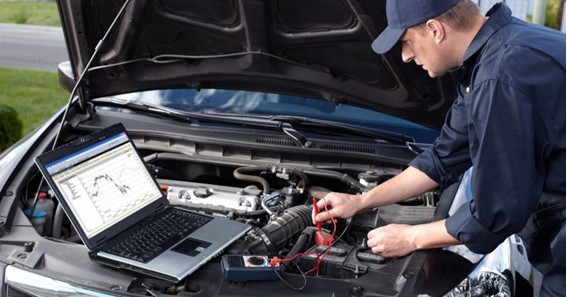Are you curious to know what is UDS? You have come to the right place as I am going to tell you everything about UDS in a very simple explanation. Without further discussion let’s begin to know what is UDS?
In today’s automotive industry, the ability to diagnose and troubleshoot vehicle systems efficiently is crucial for ensuring optimal performance and minimizing downtime. One of the key protocols used in automotive diagnostics is UDS, which stands for Unified Diagnostic Services. In this blog post, we will explore what UDS is, how it works, and its significance in the field of automotive diagnostics.
What Is UDS?
Unified Diagnostic Services (UDS) is a standardized diagnostic communication protocol used in the automotive industry. It is based on the ISO 14229 standard and is designed to facilitate communication between diagnostic testers, diagnostic equipment, and electronic control units (ECUs) in vehicles. UDS allows for efficient and standardized access to diagnostic information, fault codes, and other diagnostic functionalities.
Key Components And Functionality Of UDS:
- Diagnostic Services: UDS provides a set of standardized diagnostic services that enable communication between the diagnostic tool and the ECU. These services include reading and clearing fault codes, retrieving diagnostic information, accessing real-time data, and performing specialized diagnostic functions like programming and calibrations.
- Communication Protocol: UDS utilizes various communication protocols, such as CAN (Controller Area Network), LIN (Local Interconnect Network), and FlexRay, to establish communication between the diagnostic tool and the vehicle’s ECUs. It ensures reliable and secure data exchange during the diagnostic process.
- Diagnostic Session Control: UDS defines different diagnostic sessions that control the level of access and functionality available during diagnostics. These sessions include Default Session, Programming Session, Extended Session, and others. Each session has specific access rights and limitations, ensuring secure and controlled diagnostic operations.
- Diagnostic Data Transmission: UDS employs a standardized format for diagnostic data transmission known as Diagnostic Data Exchange (Dx) format. This format allows for the structured exchange of diagnostic information, fault codes, and measurement data between the diagnostic tool and the ECUs.
Significance Of UDS In Automotive Diagnostics:
- Efficient and Standardized Diagnostics: UDS provides a standardized approach to diagnostics, ensuring compatibility and interoperability between different diagnostic tools and vehicle ECUs. It allows automotive technicians to efficiently diagnose and troubleshoot vehicle systems by accessing standardized diagnostic functions and information.
- Enhanced Diagnostic Capabilities: UDS offers a wide range of diagnostic services and functions that go beyond basic fault code reading. It enables technicians to perform advanced diagnostic tasks such as programming, parameterization, and adaptations. This enhances their ability to diagnose complex issues and perform in-depth system analysis.
- Improved Accuracy and Reliability: UDS ensures accurate and reliable diagnostic results by providing standardized diagnostic procedures and data formats. This reduces the likelihood of errors or misinterpretation of diagnostic information, resulting in more accurate troubleshooting and repair.
- Remote Diagnostics: UDS supports remote diagnostics, allowing manufacturers and service providers to access and diagnose vehicles remotely. This enables proactive maintenance, software updates, and faster resolution of issues without the need for physical vehicle inspection.
- Future-Proofing and Scalability: UDS is designed to accommodate future advancements in vehicle technology. As new ECUs and diagnostic functionalities emerge, UDS can be updated and expanded to support these advancements, ensuring compatibility and scalability in diagnostic processes.
Conclusion:
UDS (Unified Diagnostic Services) plays a crucial role in automotive diagnostics by providing standardized and efficient communication between diagnostic tools and vehicle ECUs. With its standardized diagnostic services, communication protocols, and session control, UDS enables accurate and reliable diagnostics, advanced functionality, and compatibility across different diagnostic tools and vehicle systems. As automotive technology continues to evolve, UDS ensures that diagnostic capabilities keep pace with the increasing complexity of modern vehicles, supporting efficient troubleshooting and maintenance practices in the automotive industry.
FAQ
What Is The Meaning Of UDS?
Uniform Data System (UDS)
How The UDS Is Calculated?
UDS can be calculated by following a simple formula: Multiply the total land area with the size of the individual apartment and divide the result by the total area of all apartments in the project.
What Is UDS In India?
UDS (undivided share) is a portion of the land held by the buyer of the flat in a residential complex on a plot on which the whole structure is built. Every flat constructed on that specific plot would have a share of the land but won’t have any defined boundaries.
What Is The UDS Area Of Land?
What is UDS? UDS is the ratio of the size of one apartment to the total built-up area of all the apartments. This means the sum of all the property holders USL will be equal to the entire land size. In a comparatively small set up, you could arrive at your share by doing this simple calculation.
I Have Covered All The Following Queries And Topics In The Above Article
What Is UDS In Apartment
What Is UDS In Flat
What Is Good UDS Percentage
What Is UDS Protocol
What Is UDS In Real Estate
What Is UDS Test
What Is UDS In Flats
What Is UDS In Construction
What Is UDS In Flat
What Is UDS Property
What Is UDS In Flat In Tamil
What Is UDS In Real Estate
UDS Calculator Online
What Is Good UDS Percentage In Bangalore
What Is UDS And Carpet Area
What Is UDS
What is UDS used for
What is the concept of UDS
